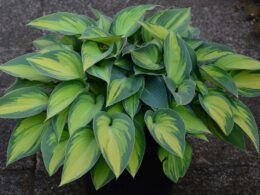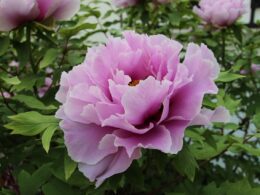If you’re a bird lover, you may be wondering whether Pink Trumpet Vine is attractive to hummingbirds. These vibrant birds are not only beautiful to watch but also help in the pollination of your garden. Let’s dive in and explore whether this charming vine is a good option for attracting hummingbirds to your garden.
Key Takeaways
- Pink Trumpet Vine has the potential to attract hummingbirds with its bright pink flowers.
- Hummingbirds look for certain characteristics in their habitat, such as food sources and nesting opportunities.
- We will explore whether Pink Trumpet Vine meets these requirements and can serve as a suitable habitat for hummingbirds.
Understanding Pink Trumpet Vine and Its Flowers
If you’re looking to attract hummingbirds to your garden, understanding the characteristics of Pink Trumpet Vine is crucial. This flowering plant is native to South America and is known for its delicate, trumpet-shaped flowers.
The Pink Trumpet Vine grows as a woody vine, reaching heights of up to 30 feet with a spread of up to 10 feet. It can thrive in a wide range of soil types, but prefers well-drained soil. The plant can tolerate both partial shade and full sun, making it an ideal choice for a variety of garden settings.
| Characteristics | Description |
|---|---|
| Flowers | The flowers of the Pink Trumpet Vine are bright pink and trumpet-shaped, measuring up to three inches long and two inches wide. They bloom from late spring to early fall. |
| Leaves | The leaves of the Pink Trumpet Vine are glossy and bright green, measuring up to six inches long and three inches wide. They are arranged in an opposite pattern along the stem. |
| Growth Habit | The Pink Trumpet Vine grows as a woody vine, climbing by twining around a support structure. It can also be trained as a small tree or shrub. |
The flowers of the Pink Trumpet Vine are the main attraction for hummingbirds. The vibrant pink color of the flowers is irresistible to these energetic birds. Additionally, the shape of the flowers is well-suited for the long beaks of hummingbirds, making it easy for them to feed on the nectar inside.
Overall, the Pink Trumpet Vine is an excellent option for attracting hummingbirds to your garden. Its colorful, trumpet-shaped flowers are attractive to hummingbirds, and its growth habits make it a versatile addition to any garden setting.
Hummingbirds and Their Preferences
If you want to attract hummingbirds to your garden, it’s essential to understand what they look for in a habitat. These birds are attracted to gardens that provide them with food, shelter, and nesting opportunities. They also have certain preferences when it comes to plants and flowers.
Hummingbirds are most attracted to plants with red, pink, or orange blooms. However, they are also drawn to plants with tubular flowers, regardless of the color. This is because their long, thin beaks are perfectly adapted to reach the nectar deep inside these flowers.
In addition to flowers, hummingbirds also need a source of insects to provide them with the protein they need to thrive. This means that gardens with a diverse range of plants and insects are more likely to attract these birds.
To create the perfect habitat for hummingbirds, it’s important to provide a variety of plants that bloom at different times throughout the year. This will ensure that there is always a source of nectar available for the birds, even during the winter months.
- Tip: Some of the best plants for attracting hummingbirds include bee balm, salvia, and cardinal flower.
By understanding the preferences and behaviors of hummingbirds, you can create a garden that is sure to attract these lively birds. But what about Pink Trumpet Vine? Does it meet the requirements of these feathered friends?
Are Hummingbird Vine and Trumpet Vine the Same Plant?
Hummingbird vine vs trumpet vine: similarities clarified. While both plants are favored by hummingbirds for their nectar-rich flowers, they are not the same. Hummingbird vine, scientifically known as Campsis radicans, features bright red or orange trumpet-shaped flowers, while trumpet vine, or Campsis grandiflora, boasts larger and tubular flowers. So, although these vines share similar preferences among feathered visitors, they have distinct characteristics that set them apart.
Pink Trumpet Vine as a Habitat for Hummingbirds
Did you know that Pink Trumpet Vine can serve as a habitat for hummingbirds? These lively birds are attracted to a variety of features in a garden, including shelter, nesting opportunities, and potential food sources. Let’s explore how Pink Trumpet Vine can meet some of these requirements and create an inviting space for hummingbirds in your yard.
Shelter
Hummingbirds need shelter to rest, roost, and hide from predators. Pink Trumpet Vine can provide this shelter through its thick foliage and twining habit. Growing up trellises, walls, or other structures, the vine can create a natural canopy that hummingbirds can use for protection. Additionally, the vine’s trumpet-shaped flowers can serve as a hiding spot for the birds.
Nesting Opportunities
Hummingbirds build their nests in a variety of locations, such as trees, shrubs, and vines. Pink Trumpet Vine can provide a suitable nesting spot for hummingbirds due to its delicate, yet sturdy, stems. The vine’s dense foliage can also offer protection for the nest, shielding it from harsh weather conditions and predators.
Potential Food Sources
Hummingbirds are attracted to plants that provide nectar-rich flowers, which they can feed on for energy. Pink Trumpet Vine’s trumpet-shaped flowers are a potential food source for hummingbirds, as they produce a sweet nectar that the birds can easily access with their long beaks. Additionally, the vine’s flowers can attract insects, which can also be a source of food for hummingbirds.
By incorporating Pink Trumpet Vine into your garden, you can create a welcoming habitat for hummingbirds. Its foliage, flowers, and growth habit provide shelter, nesting opportunities, and potential food sources for these lively birds.
Conclusion
After exploring the characteristics of Pink Trumpet Vine and the preferences of hummingbirds, we can conclude that this vine is a promising option for attracting these lively birds. Its bright pink flowers and tubular shape are likely to catch the attention of hummingbirds, and its ability to provide both shelter and food sources make it an inviting habitat.
However, it is important to note that Pink Trumpet Vine is just one of many plants that can attract hummingbirds to your garden. By incorporating a variety of flowers, shrubs, and trees that bloom throughout the year, you can increase your chances of inviting these vibrant birds to your yard.
Tips for Attracting Hummingbirds to Your Garden:
1. Plant a variety of flowers that bloom at different times of the year, including Pink Trumpet Vine, salvia, bee balm, and lantana.
2. Provide sources of both nectar and insects, such as by incorporating flowering plants and maintaining a pesticide-free yard.
3. Place feeders with a sugar-water solution in visible locations, and clean and refill them regularly.
By following these tips and incorporating Pink Trumpet Vine into your landscape, you can create a welcoming haven for hummingbirds in your own backyard.
Can I Use a Rain Bird Controller to Water My Pink Trumpet Vine and Attract Hummingbirds?
Yes, you can use a Rain Bird controller to water your pink trumpet vine and attract hummingbirds. Simply follow the Rain Bird controller instructions to set up a watering schedule that will keep your vine healthy and blooming, attracting beautiful hummingbirds to your garden.
FAQ
Q: Will Pink Trumpet Vine attract hummingbirds?
A: Yes, Pink Trumpet Vine is known to attract hummingbirds with its vibrant flowers and nectar.
Q: What are the characteristics of Pink Trumpet Vine?
A: Pink Trumpet Vine is a climbing plant that can reach heights of up to 30 feet. It has trumpet-shaped flowers that are typically pink or purple in color.
Q: Why do hummingbirds find Pink Trumpet Vine appealing?
A: Hummingbirds are attracted to Pink Trumpet Vine because of its nectar-rich flowers and the shelter it provides for nesting and perching.
Q: How can I attract hummingbirds to my garden?
A: Planting hummingbird-attracting plants like Pink Trumpet Vine, providing feeders filled with sugar water, and creating a water source can help attract hummingbirds to your garden.
Q: Does Pink Trumpet Vine serve as a habitat for hummingbirds?
A: Yes, Pink Trumpet Vine can serve as a habitat for hummingbirds, providing them with nesting opportunities, shelter, and potential food sources.









